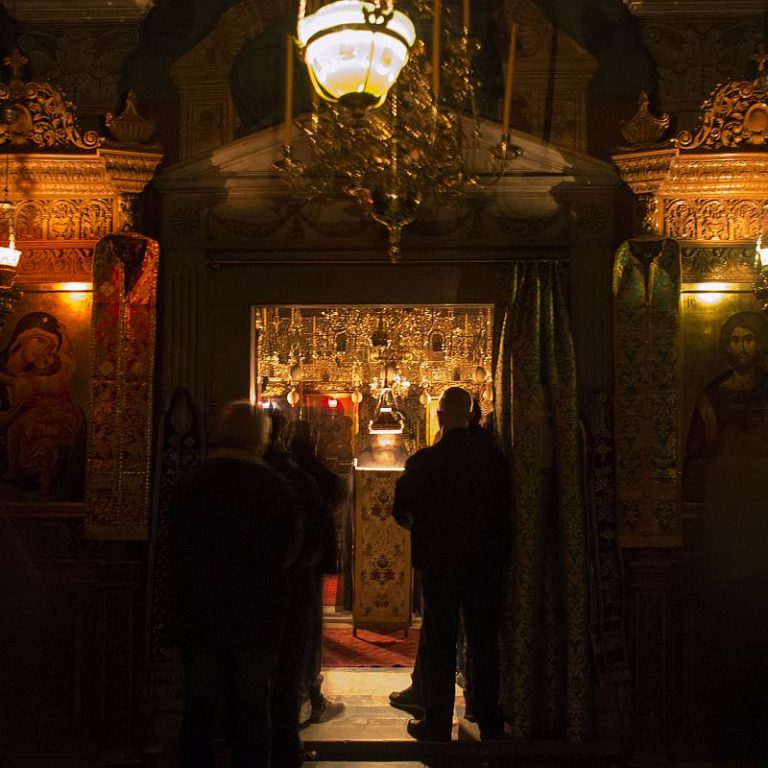The Entrance Hall
The area of the entrance hall (Λιτή or Εσωνάρθηκα; Liti, Exovarthika, 'Outer nave'), west of the central nave is connected to it via a classical style marble door, with another door on each side. This is the main entrance to the cathedral. Important interventions in the entrance hall were made during the renovations of 1847, work which was performed by the master craftsman from Tinos, Chatz-Adonis Lytras, the father of the great artist Nikiforos Lytras, with funding from the Archimandrite of the Monastery Meletios Katsoranos of Kydonieos, according to surviving inscriptions on the outer lintel.
At that time, the two pre-existing small naves were combined, and a common roof with three domes supported by marble columns was added. In addition, the chapel of the Three Heirarchs was demolished. The chapel had stood at the right side of the entrance hall, where the Tomb of the Founders was located and where magnificent frescoes by Theofanos of Crete had been painted. As part of the renovation program, the frescoes were repainted, as witnessed by a second inscription above the lintel of the main door connecting the entrance hall with the nave.
At the beginning of the 18th century, an open gallery was added to enclose the entrance hall from west and south. The square-shaped bell tower is set in the area between the chapel of the cemetery and the north wall of the entrance hall, and based on the tiles at its summit, dates to 1735. The oldest bell of the tower dates to 1610, and is decorated with images of saints. According to notes by Barsky, the bell tower also had a clock, the mechanism for which survives until today.
At that time, the two pre-existing small naves were combined, and a common roof with three domes supported by marble columns was added. In addition, the chapel of the Three Heirarchs was demolished. The chapel had stood at the right side of the entrance hall, where the Tomb of the Founders was located and where magnificent frescoes by Theofanos of Crete had been painted. As part of the renovation program, the frescoes were repainted, as witnessed by a second inscription above the lintel of the main door connecting the entrance hall with the nave.
At the beginning of the 18th century, an open gallery was added to enclose the entrance hall from west and south. The square-shaped bell tower is set in the area between the chapel of the cemetery and the north wall of the entrance hall, and based on the tiles at its summit, dates to 1735. The oldest bell of the tower dates to 1610, and is decorated with images of saints. According to notes by Barsky, the bell tower also had a clock, the mechanism for which survives until today.

